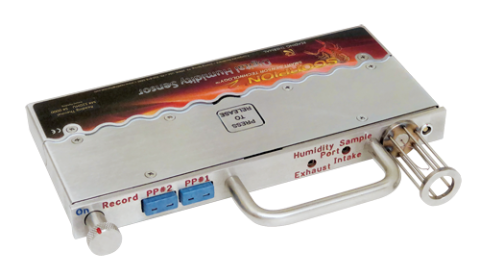In baking, humidity control is often the unsung hero that makes all the difference between a perfect batch and a failed one. While temperature gets a lot of attention, the role of humidity in the baking process is equally crucial, especially for certain types of baked goods. Reading Thermal technology makes monitoring humidity in commercial ovens easier than ever before. Let’s dive into why humidity control is essential for certain baked goods and how it can be managed effectively in a commercial baking environment.
The Science Behind Humidity in Baking
Humidity refers to the amount of moisture in the air, and it plays a critical role in the baking process. The moisture content in the air can affect how ingredients interact, how doughs rise, and how baked goods finish. For instance, in high humidity environments, doughs tend to absorb more moisture from the air, which can make them sticky and difficult to work with. On the other hand, low humidity can cause doughs to dry out, leading to cracking or a tough texture.
Humidity also affects the baking process inside the oven. For example, in bread baking, steam (a form of humidity) is often introduced into the oven at the beginning of the bake to help the dough expand fully before the crust sets. This steam also contributes to the development of a glossy, crisp crust. Without the right level of humidity, the crust can form too quickly, preventing the bread from rising properly and resulting in a dense loaf.
Specific Baked Goods that Rely on Humidity Control
Certain types of baked goods are particularly sensitive to humidity levels. Here are a few examples:
- Bread: As mentioned earlier, humidity is crucial for bread, especially artisan loaves like sourdough. The right amount of steam during baking allows for optimal oven spring (the rapid rise of bread during the first few minutes of baking) and creates the desired crust. Too little humidity can result in a pale, soft crust, while too much can make the crust overly thick and chewy.
- Pastries: Pastries like croissants and puff pastry rely on controlled humidity to achieve their characteristic flakiness. High humidity helps keep the layers of dough and butter separate during baking, allowing them to puff up and create a light, airy structure. In contrast, low humidity can cause the layers to merge, resulting in a dense, less flaky product.
- Cakes: Cakes, particularly those with high sugar content, can be sensitive to humidity. High humidity can cause sugar to absorb moisture from the air, leading to a sticky or soggy texture. On the other hand, low humidity can cause cakes to dry out too quickly, resulting in a crumbly texture.
- Cookies: For cookies, humidity can affect both the dough and the final product. High humidity can cause cookie dough to spread too much during baking, resulting in thin, flat cookies. Conversely, low humidity can cause the dough to be too stiff, leading to cookies that don’t spread enough and are overly thick.
Humidity control is a critical, yet often overlooked, factor in the baking process. By understanding the impact of humidity and implementing effective control measures, commercial bakeries can produce consistent, high-quality products that meet customer expectations. Learn more about our high-quality technology for monitoring humidity in commercial ovens by contacting Reading Thermal online or calling 610-678-5890.

